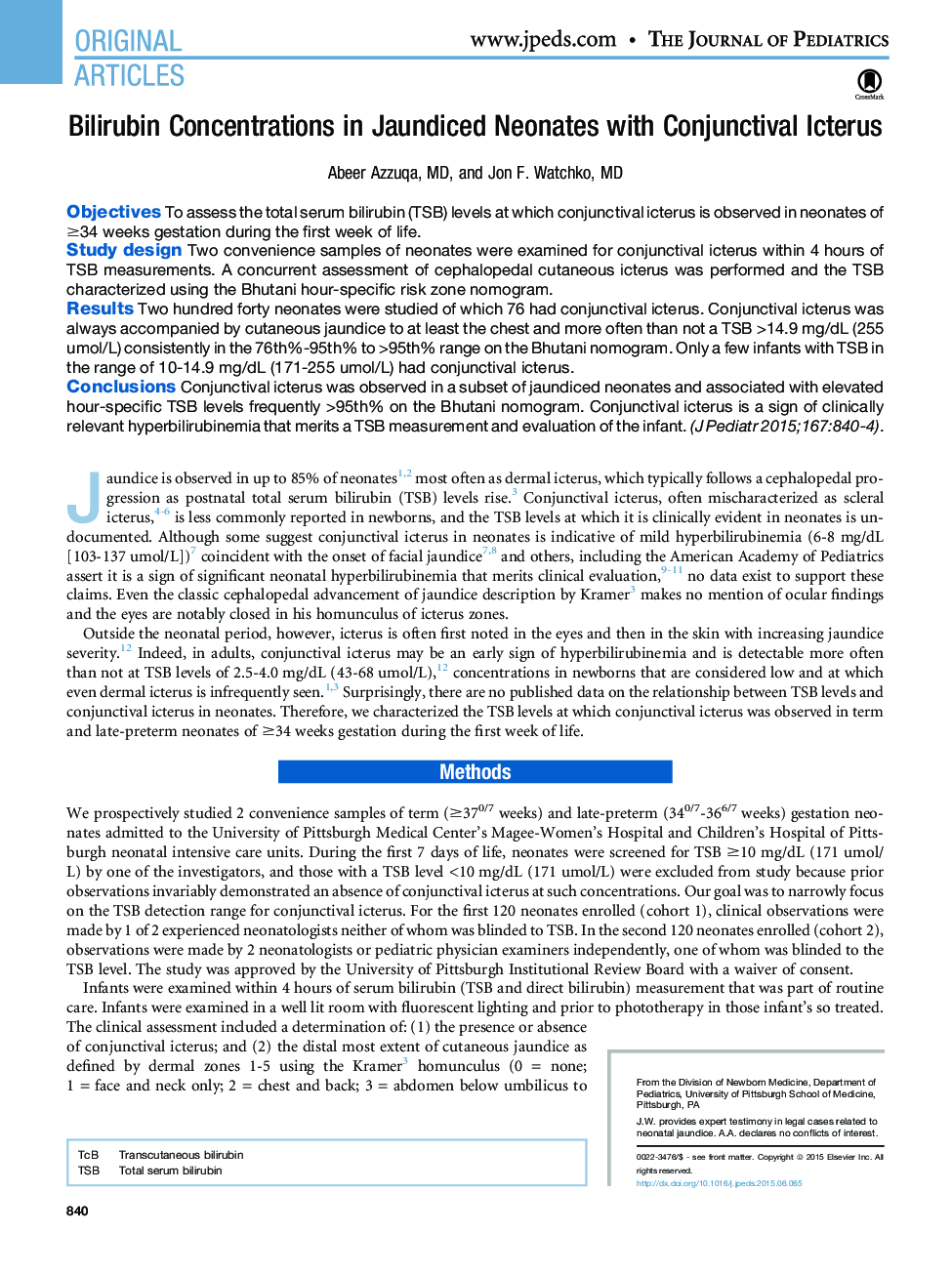| Article ID | Journal | Published Year | Pages | File Type |
|---|---|---|---|---|
| 4164804 | The Journal of Pediatrics | 2015 | 5 Pages |
ObjectivesTo assess the total serum bilirubin (TSB) levels at which conjunctival icterus is observed in neonates of ≥34 weeks gestation during the first week of life.Study designTwo convenience samples of neonates were examined for conjunctival icterus within 4 hours of TSB measurements. A concurrent assessment of cephalopedal cutaneous icterus was performed and the TSB characterized using the Bhutani hour-specific risk zone nomogram.ResultsTwo hundred forty neonates were studied of which 76 had conjunctival icterus. Conjunctival icterus was always accompanied by cutaneous jaundice to at least the chest and more often than not a TSB >14.9 mg/dL (255 umol/L) consistently in the 76th%-95th% to >95th% range on the Bhutani nomogram. Only a few infants with TSB in the range of 10-14.9 mg/dL (171-255 umol/L) had conjunctival icterus.ConclusionsConjunctival icterus was observed in a subset of jaundiced neonates and associated with elevated hour-specific TSB levels frequently >95th% on the Bhutani nomogram. Conjunctival icterus is a sign of clinically relevant hyperbilirubinemia that merits a TSB measurement and evaluation of the infant.
